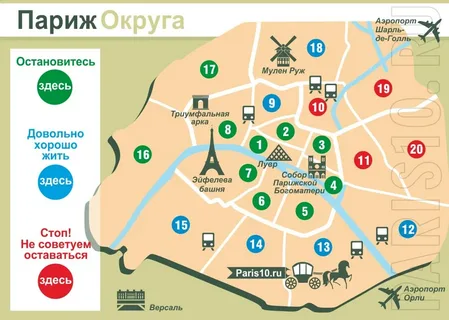If you are an entrepreneur or professional in Paris Central Business District map you can enjoy living and working in or near the city’s major business areas. Paris Central Business District numerous economic districts, each with its particular traits. Whether ultra-modern or more historic, Parisian commercial districts are usually bustling with bustle during the working day. Paris Attitude provides housing options in these commercial zones, allowing you to live in luxury near your workplace!
Parisian commercial areas
La Défense is a European business center. La Défense, located in the Hauts-de-Seine, barely 6 kilometers from Paris’s center, spans nearly 160 hectares and is the main symbol of Parisian and European enterprise. With 3,600 enterprises, 3 million m2 of office space, roughly 180,000 employees, and 250,000 m2 of commercial space, it attracts approximately 350,000 visitors daily and is Europe’s largest business area.

It attracts the biggest French and international names, with at least 15 of the world’s 50 largest corporations headquartered here. Leaders from the industrial, banking, financial, digital, insurance, and consulting industries have built decision-making centers in La Défense.
Notable names include Areva, Total, GDF-SUEZ, Societe Generale, and Saint-Gobain.
Did you know?
The Paris Central Business District map depicts the city’s 20 arrondissements, or regions. In Paris, they nane arrondissements after their numbers, corresponding to administrative districts. For example, you could live in the fifth arrondissement, written as 5ème (or 5e) in French.
The Paris Map shows that the districts spiral out from the center in numerical sequence. Suppose you know the postal code of any address in Paris.
In that case, you can easily determine which arrondissement it is located in since Parisian postal codes are in the format – 75XXX – with the final two numbers equivalent to the arrondissement (for example, 75008 is the postal code for the 8th arrondissement). People know the suburbs as the banlieues. The most desirable areas are to the west of the city (Neuilly, Boulogne, Saint Cloud, Levallois, Versailles), generally quieter than the city itself. Each Paris neighborhood and arrondissement has its distinct flavor, which we will attempt to describe below.
Where can I view royal Paris?
The Palace of Versailles, a popular tourist destination, was formerly the home of three Louis kings. It is surrounded by 815 hectares of gardens and parks. Its interior contains numerous hallways worth admiring. Purchase a ticket that includes one or two days of exploration with an audio guide.Here’s the sentence revised for clarity and active voice:
Taking a guided bike trip through the gardens and having a picnic in Marie Antoinette’s concealed town on royal grounds can give you a new perspective on life at the palace.
All of this culminates in a visit to the palace. Another landmark with a royal history is the Palace of Fontainebleau. It was inhabited for over 800 years and served as Napoleon’s palace. The national museum is presently located within its 130 chambers. You can also visit the Châteaux de Vaux-le-Vicomte to see the palace and gardens.
Secure your journey with World Nomads.
Your trip may be safe with simple and customizable international travel insurance for solitary travelers and families wherever you go. World Nomads offers travel insurance policies that include 24-hour support and transportation for medical emergencies and coverage for over 220 sports and leisure activities on snow, water, air, and land.
The insurance contract may cover experiences such as au pairs (part-time or voluntary work with children), working in a bar, fruit harvesting, office jobs, teaching, and other work overseas. World Nomads travel insurance protects you and your family.
Main routes and streets Paris Central Business District
Jacques Lebar The Paris Central Business District map road network comprises main boulevards and avenues that are generally wide and straight, and some very long roads travel from the city center to the outskirts, where streets frequently fan out in a star pattern.
Among these key lines, the street layout is a direct outcome of the city’s development and evolution over time. The Right Bank (“rive droite”) refers to all “arrondissements” north of the Seine River, whereas the Left Bank (“rive gauche”) refers to those south of it. The main core thoroughfares might help you find your bearings
.They give you an idea of the primary pathways and cross the city at right angles, with the Boulevard de Sébastopol running north to south on the right bank (north of the river) and extending along the left bank (south of the river) by the boulevard Saint-Michel,and another running east to west with the rue de Rivoli on the right bank and the boulevard Saint-Germain on the left bank.The buildings display the street names at each intersection.
